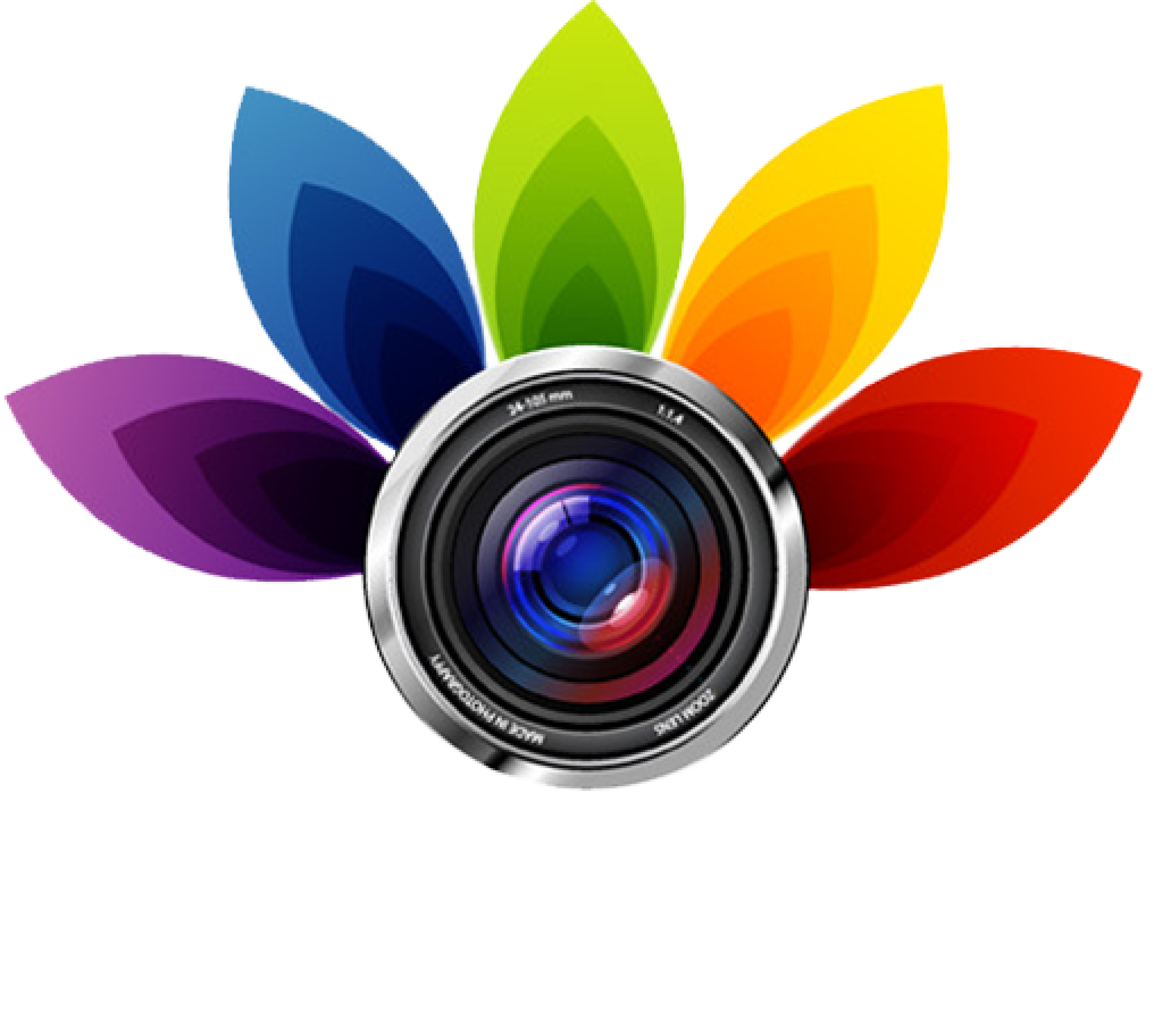
7 Top Amazing Street Photography Cameras for Your Toolkit
Street photography takes real moments of everyday life, people walking, kids playing, friends talking, or even a quiet rainy street corner. It’s all about showing truth in simple scenes, fast and without distraction. To do that well, you need a camera that’s light, quick, quiet, and easy to carry. In this guide, we highlight amazing street photography cameras for Your Toolkit, perfect companions for noticing and preserving the spontaneous beauty of the streets.
These cameras allow for easy movement through city streets, crowded markets, or nighttime scenes without the burden of heavy equipment. This guide will explain the key features that make a camera well-suited for street photography, such as abrupt lenses, quiet shutters, and compact design. It will also include easy techniques for holding the camera and focusing if you are shooting in a discreet manner or using the viewfinder. Finally, it includes straightforward editing tips to help turn everyday moments into strong visual stories. This guide is best for beginners, smartphone users, and photography enthusiasts seeking a dependable, compact camera for street use.
Here are some Tips for your Top Street Photography Cameras for Your Toolkit
1. Pick Small Cameras That Are Easy to Carry
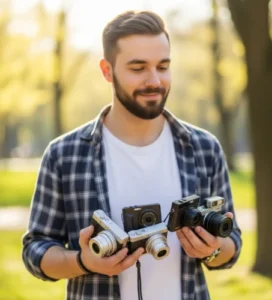 When it comes to street photography, using a small and light camera really helps. A compact camera is easier to carry all day. It won’t make you feel tired or weighed down. Smaller gear also attracts less attention. This camera helps you stay unnoticed in public spaces and take photos that look natural and not posed. People are less likely to notice you, which makes your photos feel more honest and real.
When it comes to street photography, using a small and light camera really helps. A compact camera is easier to carry all day. It won’t make you feel tired or weighed down. Smaller gear also attracts less attention. This camera helps you stay unnoticed in public spaces and take photos that look natural and not posed. People are less likely to notice you, which makes your photos feel more honest and real.
The best options for amazing street photography cameras are ones that fit easily in a jacket or pants pocket. These usually weigh between 300 and 700 grams, or about 0.7 to 1.5 pounds, making them light enough to carry anywhere. Compact mirrorless models, fixed-lens cameras, or high-end point-and-shoots work best. A lens around 28mm or 35mm is ideal since it closely matches how your eyes see the world. Go for cameras with simple controls and fast startup times so you’re ready to shoot in a second. A secure grip is also important, especially when holding the camera low or at waist level.
2. Choose Lenses That Work Well in Low Light
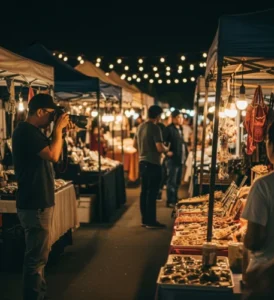 Street photography often happens in dimly lit places like bars, kitchens, or streets after sunset. That’s why having a fast and quick lens, one with a wide aperture like f/1.4, f/1.8, or f/2.0, is important. These lenses let in more light, allowing you to shoot clear and sharp photos without using a flash. Prime lenses such as a 35mm f/1.8 or 50mm f/1.4 are small, quick, and perfect for this style of shooting. If you prefer zoom lenses, something like a 24–70mm f/2.8 works well but might be bulkier. Also, quiet focus motors in lenses help avoid distracting your subjects.
Street photography often happens in dimly lit places like bars, kitchens, or streets after sunset. That’s why having a fast and quick lens, one with a wide aperture like f/1.4, f/1.8, or f/2.0, is important. These lenses let in more light, allowing you to shoot clear and sharp photos without using a flash. Prime lenses such as a 35mm f/1.8 or 50mm f/1.4 are small, quick, and perfect for this style of shooting. If you prefer zoom lenses, something like a 24–70mm f/2.8 works well but might be bulkier. Also, quiet focus motors in lenses help avoid distracting your subjects.
Here are some quick tips for using fast lenses:
- Shoot wide open (at the widest aperture) to create beautiful background blur and make your subject stand out.
- Get closer to your subject to add more depth and drama.
- Use image stabilization (IBIS) to avoid blurry shots when shooting handheld in low light.
3. Choose a Quiet Camera for Candid Shots
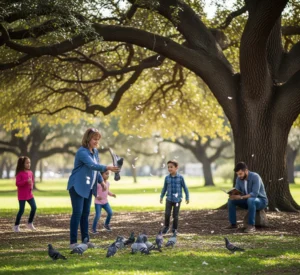 Silence is important in street photography because it allows you to take genuine, natural moments such as a laugh, a glance, or a fleeting smile without bothering anyone. Loud shutter sounds can scare people or make them feel uncomfortable, which changes the scene. Look for cameras with a silent or electronic shutter option so your clicks don’t make noise. Fast autofocus is also important to quickly focus on moving subjects. Cameras with burst mode (5 to 10 frames per second) help catch short actions by taking many photos in a row.
Silence is important in street photography because it allows you to take genuine, natural moments such as a laugh, a glance, or a fleeting smile without bothering anyone. Loud shutter sounds can scare people or make them feel uncomfortable, which changes the scene. Look for cameras with a silent or electronic shutter option so your clicks don’t make noise. Fast autofocus is also important to quickly focus on moving subjects. Cameras with burst mode (5 to 10 frames per second) help catch short actions by taking many photos in a row.
Also, watch your camera’s screen or viewfinder brightness. A bright display can draw attention and make people notice you, which is not ideal for candid shots. Many amazing street photography cameras offer dim or quiet display options, helping you stay discreet while focusing on the scene in front of you.
Here are some quick tips:
- Practice shooting silently by turning off sounds on your camera and phone.
- Keep your eye close to the viewfinder and shoot from the shoulder to stay steady and less obvious.
- Watch your subjects carefully to catch the best moments.
- Avoid using flash to keep photos natural.
With a quiet camera and these tips, you can take honest and beautiful photos without disturbing the scene.
4. Pick a Camera That’s Safe in Rain or Dust
 Street photography often means dealing with unpredictable weather like rain, dust, or wind. That’s why amazing street photography cameras with weather sealing are a smart choice. Weather sealing uses rubber gaskets and protective parts to block rain, dust, and dirt. Many of these cameras are built with sturdy materials like magnesium alloy, which feel solid but remain light to carry. Good models also have buttons that work even when wet or while wearing gloves. Pairing a weather-sealed camera with a weather-sealed lens gives full protection, letting you shoot confidently in any condition. This durability is key for catching spontaneous moments no matter the weather.
Street photography often means dealing with unpredictable weather like rain, dust, or wind. That’s why amazing street photography cameras with weather sealing are a smart choice. Weather sealing uses rubber gaskets and protective parts to block rain, dust, and dirt. Many of these cameras are built with sturdy materials like magnesium alloy, which feel solid but remain light to carry. Good models also have buttons that work even when wet or while wearing gloves. Pairing a weather-sealed camera with a weather-sealed lens gives full protection, letting you shoot confidently in any condition. This durability is key for catching spontaneous moments no matter the weather.
5. Use a Camera with a Good Viewfinder
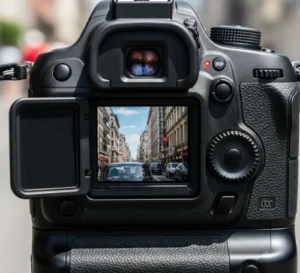 A good viewfinder can quickly improve your shooting experience, especially in busy streets or shifting light. On sunny days, a camera screen can be hard to see, but amazing street photography cameras with high-resolution viewfinders make a big difference. They let you compose shots clearly while showing accurate colors and details. The best ones switch on automatically when you raise the camera to your eye and display focus and exposure settings without delay.
A good viewfinder can quickly improve your shooting experience, especially in busy streets or shifting light. On sunny days, a camera screen can be hard to see, but amazing street photography cameras with high-resolution viewfinders make a big difference. They let you compose shots clearly while showing accurate colors and details. The best ones switch on automatically when you raise the camera to your eye and display focus and exposure settings without delay.
To get the most from your viewfinder:
- Practice shooting close to your body for steadiness.
- Keep a finger ready to adjust focus quickly.
- Use the eye sensor feature so the viewfinder switches on effectively.
6. Edit Photos Easily After You Shoot
 Editing your street photos helps turn simple snaps into meaningful stories. Cameras that shoot in RAW format give you the most detail and flexibility during editing. Look for cameras with built-in color profiles like Fujifilm’s Classic Chrome or Monochrome for great starting points. Use simple photo editing software such as Lightroom, Snapseed, or Capture One to:
Editing your street photos helps turn simple snaps into meaningful stories. Cameras that shoot in RAW format give you the most detail and flexibility during editing. Look for cameras with built-in color profiles like Fujifilm’s Classic Chrome or Monochrome for great starting points. Use simple photo editing software such as Lightroom, Snapseed, or Capture One to:
- Adjust exposure to bring out faces or shadows.
- Crop images to focus on the main subject.
- Slightly increase contrast to make photos pop.
- Convert some images to black and white to emphasize mood.
- Add a vignette to guide the viewer’s eye to your subject.
7. Great Gear for Daily Street Projects
 One of the best ways to improve your street photography is to shoot every day for a set period, like a week or a month. This builds your skills and helps you notice small urban details. Choose daily themes such as morning commutes, street art, park life, or food vendors. Keep your camera settings consistent so you learn how it behaves in different conditions. Review your photos right after each session to understand what works well. Taking small daily assignments, such as 3 to 5 photos a day, makes the process easier and more enjoyable.
One of the best ways to improve your street photography is to shoot every day for a set period, like a week or a month. This builds your skills and helps you notice small urban details. Choose daily themes such as morning commutes, street art, park life, or food vendors. Keep your camera settings consistent so you learn how it behaves in different conditions. Review your photos right after each session to understand what works well. Taking small daily assignments, such as 3 to 5 photos a day, makes the process easier and more enjoyable.
Some helpful habits include the following:
- Carry a basic kit with your camera, lens, memory card, and spare battery.
- Regularly keeping your memory card empty so you never run out of space.
- Saving your photos to the cloud or your phone helps keep them safe.
- Sharing or printing your photos allows you to review your work and see how you are improving.
Keep Your Camera Gear Simple and Ready to Go
 Having just the right gear with you makes street photography more fun and less stressful. Carrying on what you only need, such as your camera, a lens or two, an extra battery, and memory cards, means you move faster and don’t get weighed down. A small, lightweight camera bag or even a secure sling bag is perfect for keeping everything close and easy to reach.
Having just the right gear with you makes street photography more fun and less stressful. Carrying on what you only need, such as your camera, a lens or two, an extra battery, and memory cards, means you move faster and don’t get weighed down. A small, lightweight camera bag or even a secure sling bag is perfect for keeping everything close and easy to reach.
When you carry light equipment, it is easier to move quickly and respond to fascinating moments as they happen. Try not to bring heavy tripods or too many lenses, as they can slow you down. Keep your gear well-organized so you do not waste time looking for items during a shoot. A simple and neat setup allows you to spend more time observing the streets and less time managing your equipment.
Why the Right Camera Matters for Street Photography
Street photography is about being quick, light, and prepared to notice real moments as they happen, without interrupting the scene. This is why choosing the right camera is important. A good street camera should be small enough to carry comfortably all day, quiet enough not to draw attention, and fast enough to take a clear photo in an instant. If you are new to photography or already enjoy taking pictures on the move, using the right equipment helps you stay focused on what is happening around you rather than adjusting camera settings.
Conclusion
Street photography is about noticing everyday moments such as an old man smiling, a child skipping, or a reflection on a wet street at night. This guide offers useful tips for choosing a good street camera with features like a small body, fast lens, quiet shutter, and strong build. A clear viewfinder helps with framing each shot, and simple editing can increase the final image.
With the right camera, you can go out every day, move freely, and come back with photos that feel real and full of emotion. What kind of camera are you thinking about using? Is there a street moment you wish you had photographed? You are welcome to share your thoughts or stories in the comments below.
Read Next: 7 Tips to Build a Successful T-Shirt Store in 2025
